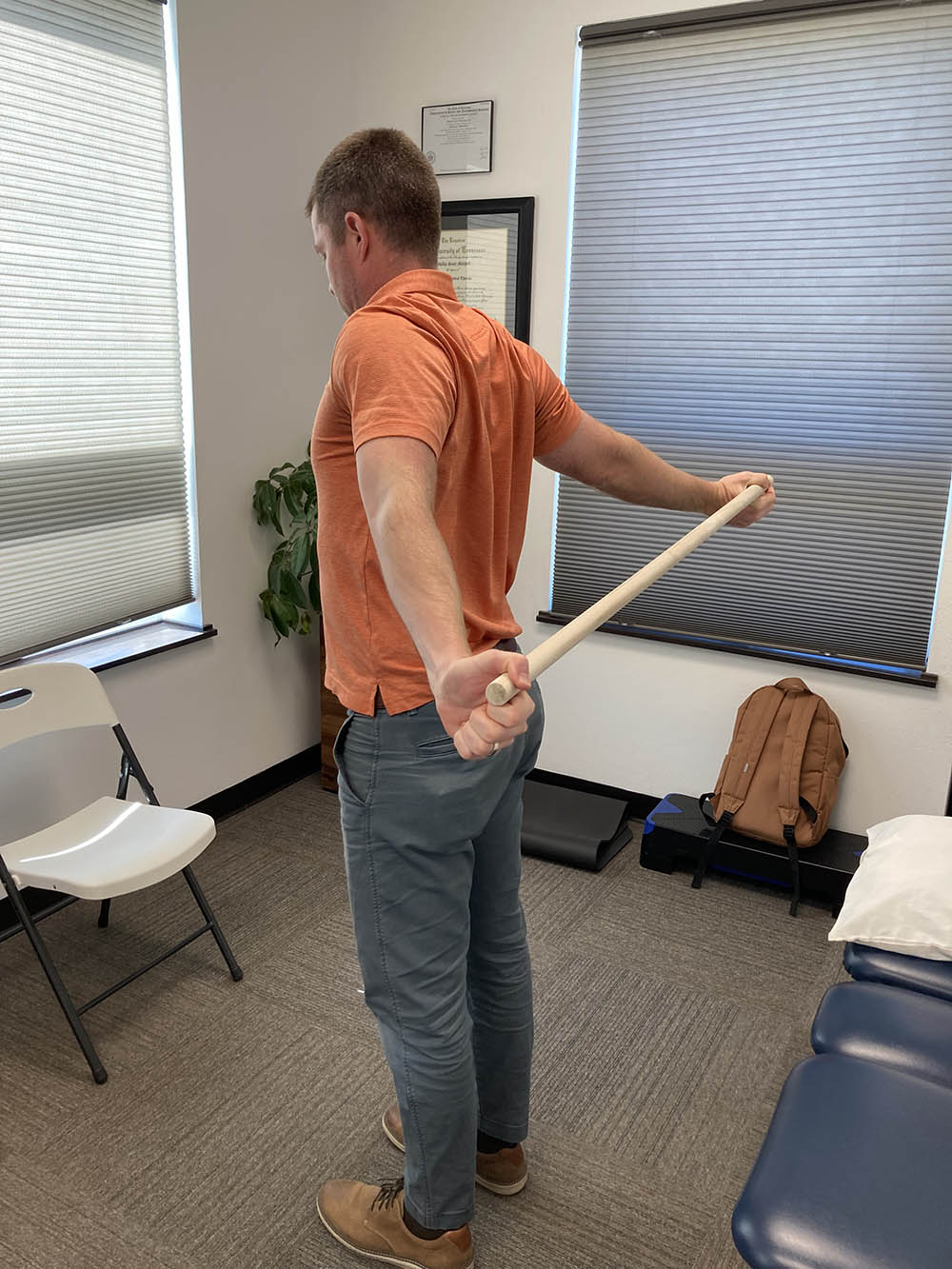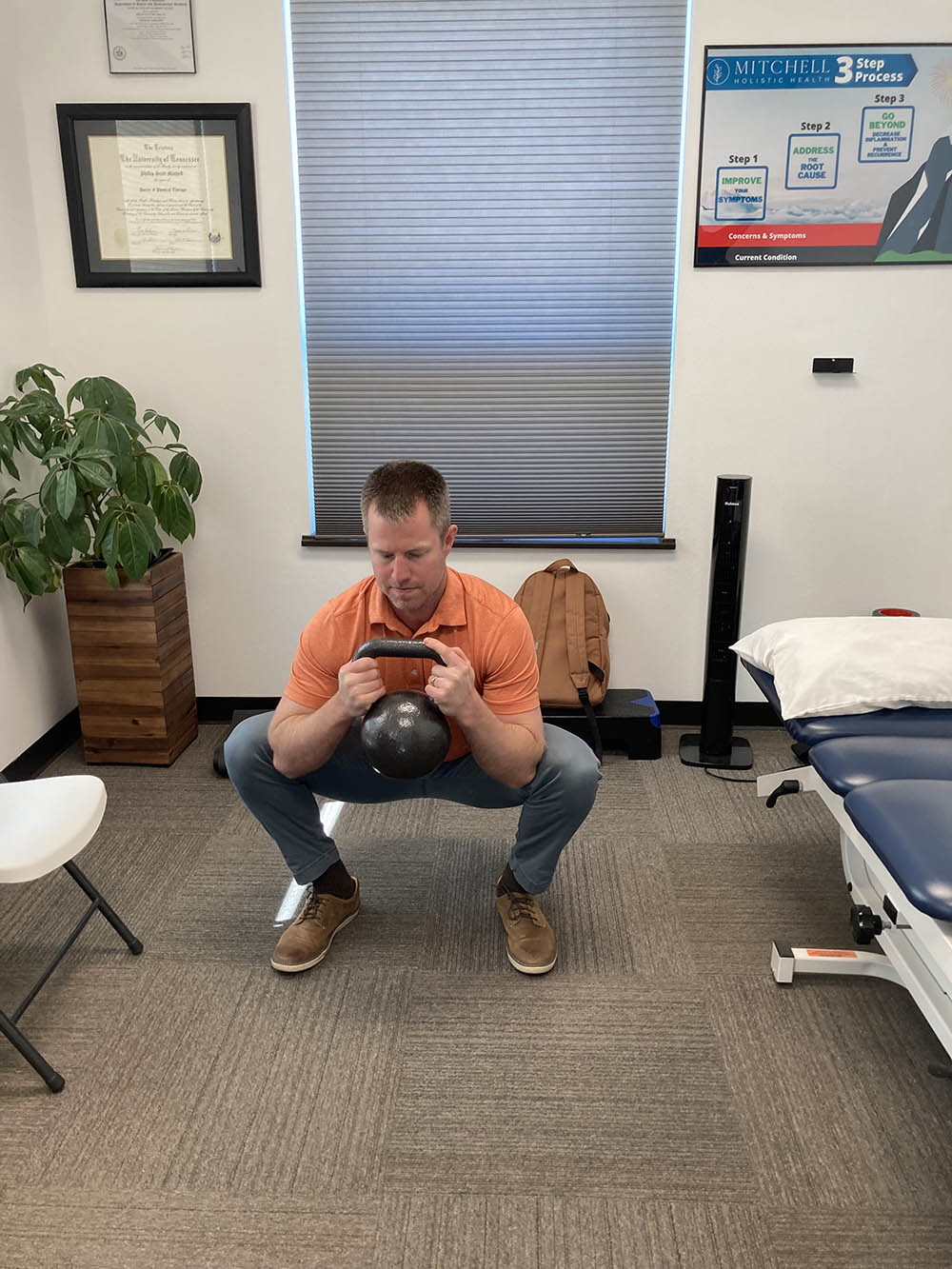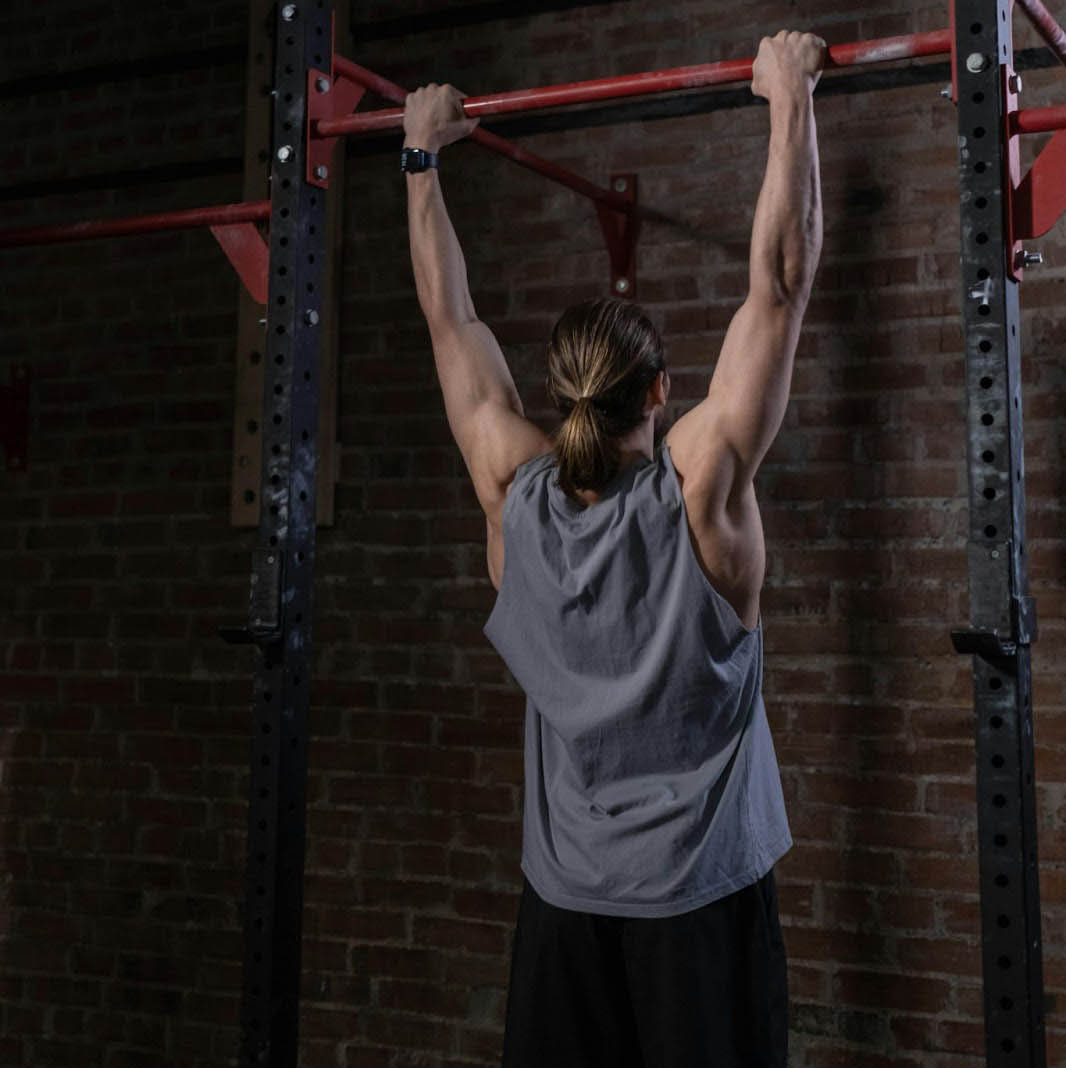CrossFit training has become a very popular workout program around the country, and by now, I’m sure you either have tried it or know someone who currently does CrossFit. CrossFit workouts are known to increase overall strength and cardiovascular conditioning through their programs and also challenge the body through their unique workouts. One of the hallmarks of CrossFit is how it challenges the entire body. The workouts will push the limits of your strength and conditioning, which is great for overall health and wellness. However, if not done properly, pushing the body this hard can sometimes lead to unnecessary injuries.
So, today on the blog, we want to highlight some of the common CrossFit injuries that Phillip sees in the clinic and discuss general methods and exercises to reduce your chance of injury.
1. Shoulder Impingement
Shoulder impingement can have many symptoms, but it is generally characterized by pain in the top of the shoulder when lifting your arms overhead. One way that CrossFit varies from many other general workout plans is that it incorporates Olympic overhead lifts. Many of these Olympic lifts can be difficult to perform if you are new to CrossFit. Overhead lifts require strength, mobility, and coordination to perform these lifts correctly, and what Phillip has found in working with lots of CrossFitters is that many who experience shoulder impingement have some shoulder dysfunction that is leading to their shoulder impingement.
So, you might be asking how to improve shoulder mobility to avoid further shoulder impingement. Here are two quick tips from Phillip, our physical therapist:
- Bar hangs: Put both of your hands on an overhead bar and hang while keeping your rib cage down. This will primarily stretch your lat muscles and improve your overhead range of motion.
- Dowel stretching: You can easily find a dowel at most gyms or even at Walmart. Hold onto the dowel with both hands and take it overhead and behind the back. This can improve overall shoulder mobility in all directions.

2. Patellar tendonitis
Patellar tendonitis is characterized by pain along the front of the knee and typically comes from overuse and poor form with jumping, lifting, and squatting. Patellar tendinitis can also present with swelling, painful motion of the knee, and general weakness around the knee. One of the best ways to avoid patellar tendonitis is to perform a proper warm-up before working out and stretch after the workout when your tissues are more elastic.
One of the main issues Phillip has seen that can lead to patellar tendinitis is poor form with squatting and lifting. The typical pattern that you will see is the knees will go inward at the bottom of the squat which leads to excessive stress on the knee. Some people might be able to get away with slightly poor form, but with CrossFit, you are pushing your physical limits by lifting heavier weights in the least amount of time possible. Over time, the tissue in the front of the knee will get inflamed and can lead to significant limitations with in normal CrossFit workout.
Tips for improving squat form:
- Banded squat: A great exercise to address poor squat form is to put a band around your knees and try squatting while pushing your knees out into the band. This encourages the knees to rotate out rather than in and leads to much less stress on the knees. As this exercise is performed over weeks, it becomes a normal habit for the knees and can help someone recover from patellar knee pain.
3. Low back pain
Another common injury Phillip treats among CrossFitters is low back pain. In fact, low back pain is one of the most common musculoskeletal injuries we see in the general public. Low back pain can vary from tightness and achy pain across the back to sharp, stabbing nerve pain from the back, down the legs, and to the feet. CrossFit workouts regularly involve heavy squats, power cleans, and deadlifts, and for many people, these exercises lead to back pain due to poor form, i.e. overusing the back instead of the legs and glutes.
For people to see improvement in their squat and lifting form (and less pain overall), we recommend that they work on mobility and coordination. For people to not overuse their back when lifting, it requires them to get deep enough into their squat to recruit the right muscles when attempting to lift. Working on better ankle and hip mobility will allow the person to get proper depth on their squat and lift the weight with the glutes instead of their lower back muscles.
Tips for improving squat form and eliminating lower back pain:
- Deep squat stretch: Making sure that you have good mobility is vital for developing proper squat form. One of our favorite ways to encourage better mobility is through a deep squat stretch. Place your feet shoulder-width apart, and drop your glutes to your ankles (in a squatting position), placing your elbows on the inside of your knees. Aim to keep your feet flat on the ground and sit in this position for 30 seconds to 1 minute at a time.

- Ankle dorsiflexion stretch: Another exercise to work on mobility and coordination is an ankle dorsiflexion stretch. What we mean by ankle dorsiflexion is when you bend the ankle joint in a backward direction. Using a chair, place the ankle you’re stretching in the seat of the chair, bend your knee to 90 degrees, and lunge forward.



